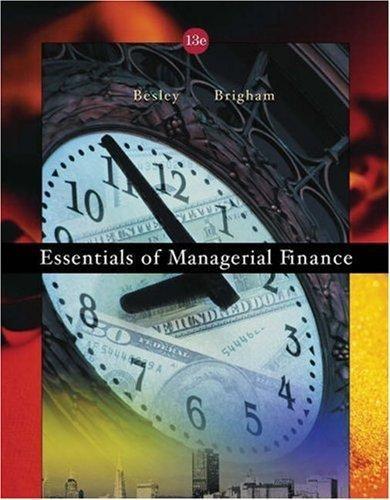Answered step by step
Verified Expert Solution
Question
1 Approved Answer
ABC Corp is a levered company with a market value of debt of $ 2 0 million. The company has had consistently stable unlevered free
ABC Corp is a levered company with a market value of debt of $ million. The
company has had consistently stable unlevered free cash flow of $ million each
year. The company faces a marginal tax rate of The firm management is
considering to permanently increase its leverage to benefit from unexploited tax
shields. The proceeds of any new debt issuance will be used to repurchase stock. The
current number of outstanding shares is million. According to the managements
estimations, the present value of the direct default costs is of the firms unlevered
value of assets. The probability of bankruptcy increases with leverage according to the
following schedule:
Debt million Default probability
$
$
$
$
$
All investors of the company are riskneutral. The longterm treasury bill rate is
and the expected market risk premium is The beta of the assets is currently
a Estimate the optimal level of debt for the firm based on the Tradeoff Theory.
Explain your calculations, and summarize the tax shields, default costs, and
market value of the firm for each debt level in a table.
marks
b At what price will the firm be able to repurchase the stock if the firm
implements the optimal debt level? Motivate assumptions used in your
calculations.
marks
c Show and compare the initial market value balance sheet and the market
value balance sheets at different stages of the leverage recapitalization
announcement debt issuance, stock repurchase Explain all required
calculations.
marks
d After estimating the optimal level of debt, management realises it has not
taken into account the fact that the company is fast growing and has many
investment opportunities. How would this change the decision of management
on optimal capital structure?
marks
e Assume the firm has implemented the leverage recapitalization based on the
optimal debt level determined in the question a and the company faces a
Page of
positive NPV investment opportunity requiring investment of $ million. The
management cannot find external financing for this project, and current
debtholders also refuse to fund it What should the equity holders expected
payoff be to motivate them to fund this investment? What can be done if the
actual equity holders expected payoff is lower than the one you have
calculated. Discuss one possible solution for this situation Hint: propose a
deal in which both equity holders and debtholders have a mutual interest to
support this investment
Step by Step Solution
There are 3 Steps involved in it
Step: 1

Get Instant Access to Expert-Tailored Solutions
See step-by-step solutions with expert insights and AI powered tools for academic success
Step: 2

Step: 3

Ace Your Homework with AI
Get the answers you need in no time with our AI-driven, step-by-step assistance
Get Started


